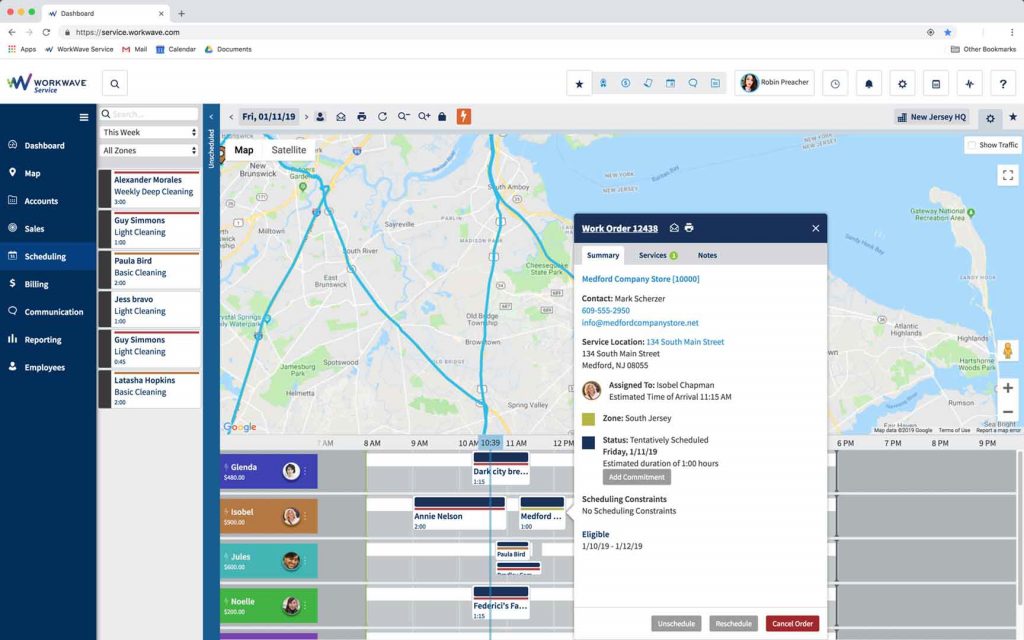If you’re entering the HVAC industry, you’ll want to make sure you are equipped with the best tools for HVAC success, which range from the basic essentials to those that are nice to have, but not necessarily mandatory. Whether you’re on a service call or doing routine maintenance, you need to make sure you have reliable and durable tools available to you at a moment’s notice in order to help get the job done quickly and efficiently.
We’ve compiled the below HVAC technician tool list for your reference, so you are never left unprepared.
HVAC Hand Tools
“The HVAC Must Have Tools”
Hammers
First on our HVAC tools list is the ever-reliable hammer. HVAC technicians should always have a carpenter-style hammer to complete a variety of tasks. It is recommended to have a lightweight hammer to not weigh down your HVAC technician tool belt.
Screwdrivers
Continuing with the “Must Have HVAC Tools” list, no toolkit is complete without a solid set of screwdrivers. You’ll want a variety of screwdrivers, with different sizes and types as you will be unscrewing and screwing a multitude of things (units, vents, thermostats, etc.). Lastly, make sure you use screwdrivers with insulated handles to protect you from electrical shock.
Pliers
A set of pliers is also crucial to have as an HVAC technician. The set of pliers should include wire strippers, needle-nose, linesman, channel-lock, and open-face pliers. Each type of plier has its own specialty, for example, needle nose pliers are used in grabbing wire while working on a thermostat. Be sure to get a set with insulated handles to protect yourself from electrical shock.
Tape Measure
Every HVAC technician should have a 25-foot tape measure. From measuring everything from furnaces to air conditioner units, it’s important that HVAC technicians are able to accurately read a tape measure.
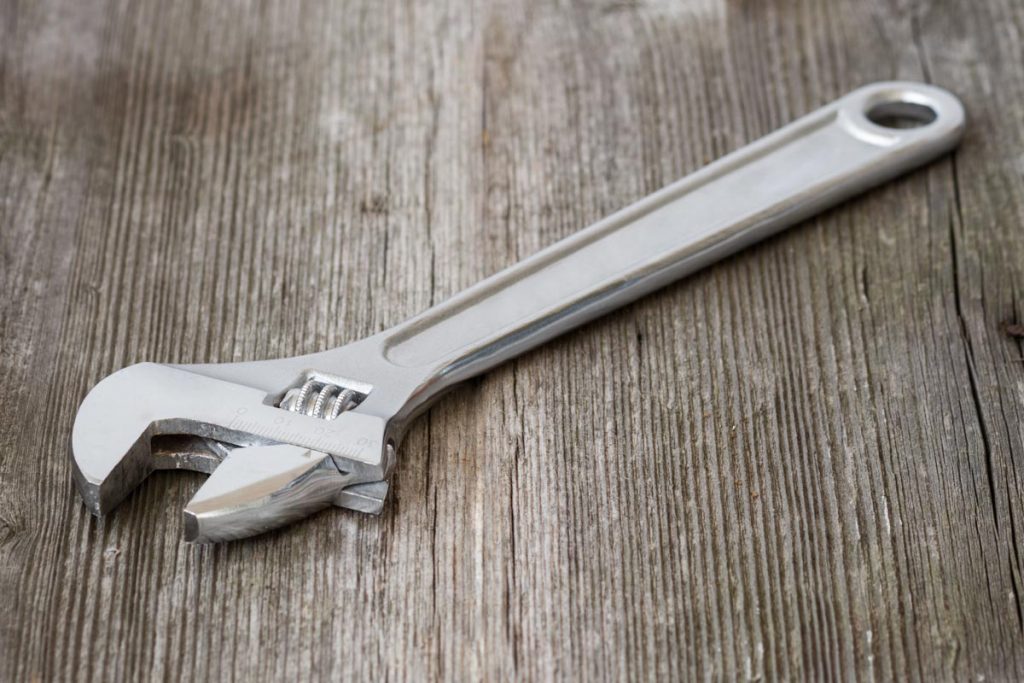
Crescent Wrenches
As part of our HVAC tools list, the next must-have for HVAC technicians is a set of crescent wrenches. Having a set of small, medium, and large wrenches will allow you the flexibility needed to complete certain tasks.
Flashlight
Flashlights are basic but important for every HVAC technician to have. We suggest using a headlamp to free up your hands for what you’re working on.
Battery-Powered Drill
Cordless, battery-powered drills are extremely useful in the field for an HVAC technician. You’ll want a drill that is reliable and durable, as you’ll be using it on a regular basis.
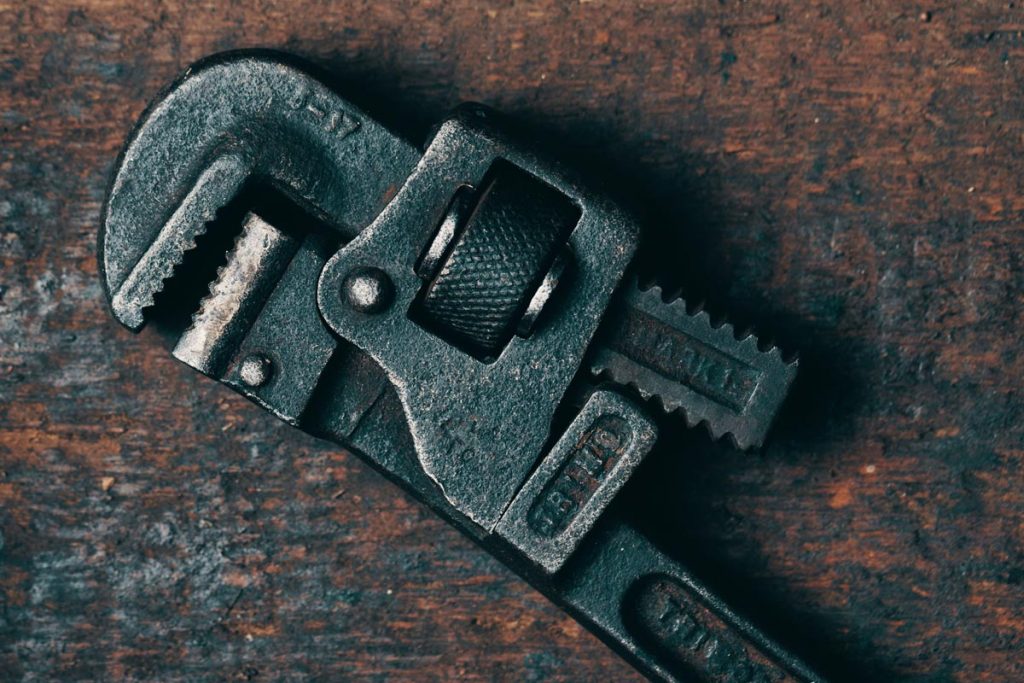
Pipe Wrench
Pipe wrenches are important for HVAC technicians as they allow you to secure natural gas and plumbing connections.
HVAC Safety Tools
“The Should Haves”

Multimeter
The multimeter is one of the most crucial HVAC technician safety tools. It checks for electrical current and notifies you if there is voltage present, preventing you from being electrocuted. You can use a multimeter to detect electrical currents on wires, switches, or outlets.
Gloves
Being an HVAC system technician requires you to have durable and protective gloves, as you’ll have a very hands-on job. It’s also important to have a pair of gloves that allows you some flexibility so that you’re able to hold smaller tools and parts.
Ear Plugs
Since you’ll be using power tools on a regular basis, be sure to protect your hearing with a solid pair of earplugs.
Safety Goggles
Protect your eyes from dust and metal debris with a pair of safety goggles. It’s important to have accurate and detailed vision while working on the job, so taking steps to protect your eyes is always a smart move.
Footwear
Each job may have its own terrain, so be sure to have the proper footwear. It’s recommended to have a pair of heavy steel toe work boots, protecting your feet from a potential accident.
HVAC Specialty Tools
“The Ones That Get The Job Done”
Thermometer
Temperature control and regulation is another important part of tools for HVAC technicians. You’ll want to make sure you select a portable and accurate thermometer so that you’re able to follow regulations and satisfy the customer.
Reciprocating Saw
The best way to cut through most materials during an HVAC job is to use a Sawzall, or reciprocating saw. You can use a reciprocating saw to cut through drywall, sheet metal, pipes, old condensers, or wood.
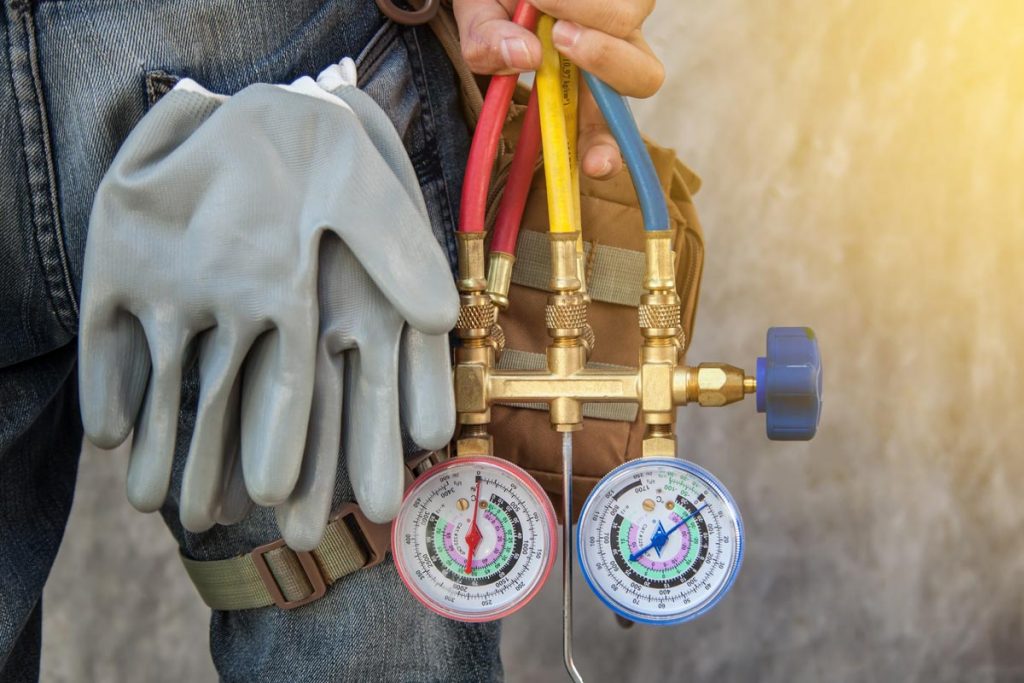
Manifold Gauge
One of the most used HVAC tools is the manifold gauge set. This set can be used to detect leaks, during the removal of refrigerant, and when charging an air conditioning unit.
Extension Cord
Extension cords are often an overlooked part of being an HVAC technician. When using tools that aren’t battery-powered, you’ll be glad you brought extension cords along with you.
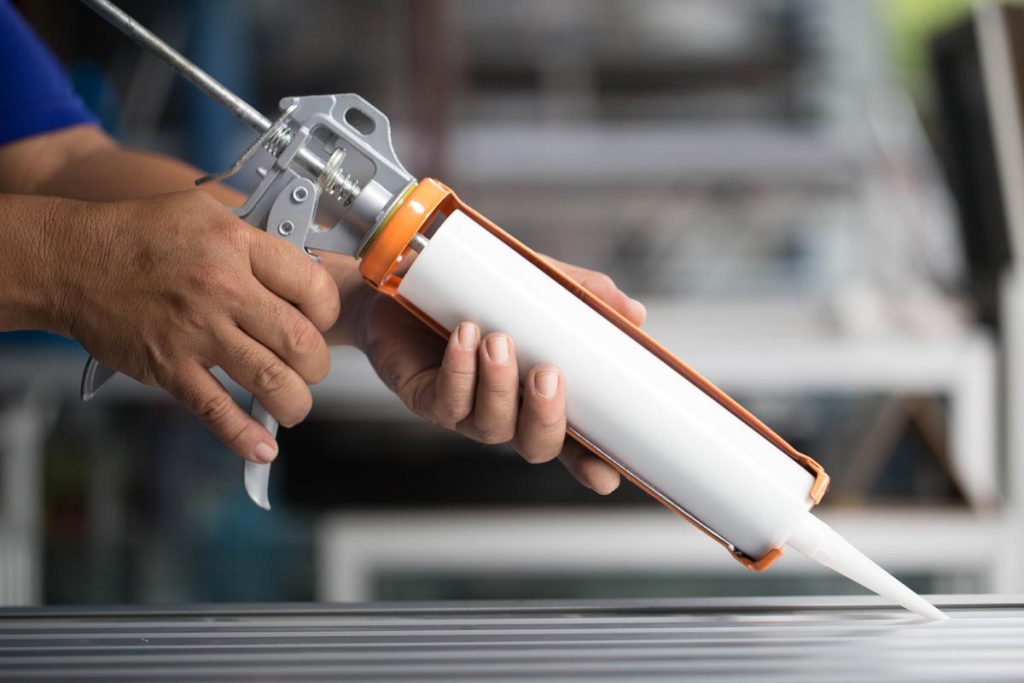
Caulking Gun
It’s recommended to purchase a dripless caulking gun. You can use a caulking gun to seal ducts and fill holes when necessary.
Pumps
When on the job, you’ll often have to remove moisture from the lines, so that’s where the pumps will come into play.
HVAC Software
The best HVAC business software will help with easy-to-use features for drag-and-drop scheduling, dispatching, service, lead management/CRM, invoicing, and billing.
Have any other HVAC contractor tool recommendations? Let us know on Twitter or Facebook!



